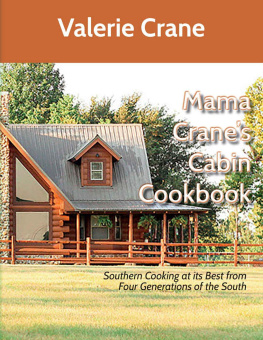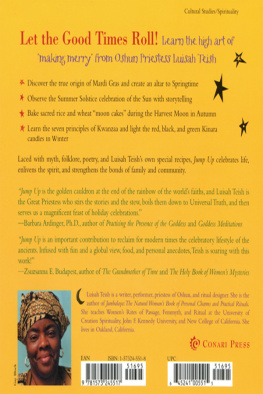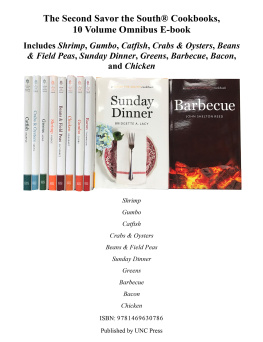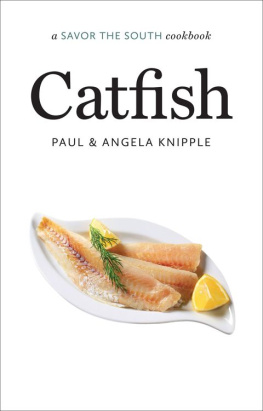a SAVOR THE SOUTHcookbook
Southern Holidays
SAVOR THE SOUTHcookbooks
Southern Holidays, by Debbie Moose (2014)
Sweet Potatoes, by April McGreger (2014)
Okra, by Virginia Willis (2014)
Pickles and Preserves, by Andrea Weigl (2014)
Bourbon, by Kathleen Purvis (2013)
Biscuits, by Belinda Ellis (2013)
Tomatoes, by Miriam Rubin (2013)
Peaches, by Kelly Alexander (2013)
Pecans, by Kathleen Purvis (2012)
Buttermilk, by Debbie Moose (2012)
2014 Debbie Moose
All rights reserved. Manufactured in the United States of America.
SAVOR THE SOUTH is a registered trademark of the
University of North Carolina Press, Inc.
Designed by Kimberly Bryant and set in Miller and
Calluna Sans types by Rebecca Evans.
The paper in this book meets the guidelines for permanence and durability of the Committee on Production Guidelines for Book Longevity of the Council on Library Resources. The University of North Carolina Press has been a member of the Green Press Initiative since 2003.
Jacket illustration: Coconut cake, DebbiSmirnoff/iStockphoto; cake stand base, allenmorrisphoto/iStockphoto; confetti, BanksPhotos/iStockphoto.
Library of Congress Cataloging-in-Publication Data
Moose, Debbie.
Southern holidays : a savor the South cookbook / Debbie Moose.
pages cm Includes index.
ISBN 978-1-4696-1789-3 (cloth : alk. paper)
ISBN 978-1-4696-1790-9 (ebook)
1. Cooking, AmericanSouthern style. 2. Holiday cooking. 3. Seasonal cooking. I. Title.
TX715.2.S68M6645 2014 641.5975dc23 2014012922
18 17 16 15 14 5 4 3 2 1
Sweet Potatoes Restaurants Quick and Easy Hoppin John Soup is reprinted with permission from Stephanie L. Tyson, Well, Shut My Mouth! The Sweet Potatoes Restaurant Cookbook (Winston-Salem, NC: John F. Blair, 2011); How to Do Your Own Oyster Roast is reprinted from Elizabeth Wiegand, The Outer Banks Cookbook: Recipes and Traditions from North Carolinas Barrier Islands, 2013 Morris Book Publishing, LLC, used by permission of the publisher, Globe Pequot Press; Nanticoke Catfish originally appeared in The Chesapeake Bay through Ebony Eyes and is reprinted with permission from Adrian Miller, Soul Food: The Surprising Story of an American Cuisine, One Plate at a Time (Chapel Hill: University of North Carolina Press, 2013).
To Rob
Did you really think I was going to stop
after five books?
Contents
Special Treats from Christmas Coconut Cake to
St. Josephs Day Cookies
Sweet Potatoes Restaurants Quick and Easy
Hoppin John Soup
Theres Ham on the Easter Table, and Seafood Abounds
as Fleets Set Sail for the Season
Southerners Celebrate Special Foods
and Moments in History
Chef & the Farmers Sugar Baby Watermelon Salad
with Jalapeo Vinaigrette
Thanksgiving Feasts and Ethnic Food Celebrations
Make the Season Glow
a SAVOR THE SOUTHcookbook
Southern Holidays
Introduction
FOR SOUTHERNERS, PRACTICALLY EVERY DAYS A HOLIDAY
Southerners really know how to throw a party, and a holiday is the best excuse of all for one. We bring out our cherished family recipes, sprinkle in some new ideas, and start celebrating.
And we have a delightfully broad definition of holiday.
We respect tradition, but we bring our special culinary touches to even the most traditional of holidays, such as Hanukkah, Christmas, Easter, and Thanksgiving.
But the regular calendar holidays arent enough for us. We hold festivals for the sole purpose of celebrating beloved regional foods, such as peaches and seafood. We honor parts of history along with good things to eat, marking the contributions of African Americans, Italians, Greeks, Germans, Jews, and others to the gumbo that is todays southern culture. If you look at the South through its food, youll realize the region has always been more diverse than people think, especially today.
And everyone knows that anything associated with college basketball is a holiday in these partsdont even try to argue about that.
The food served at holiday events has both personal and cultural connections. Special dishes carry specific memories for each family, but many also have roots in a common past. You can trace them back like a golden thread that ties families together, no matter how different, in a shared southern history. The Thanksgiving sweet potato casserole is one example. Now its on holiday tables from Seattle to St. Augustine, with or without little marshmallows on top, but it most likely got started in the South. This region has long been a prime area for growing sweet potatoes. North Carolina produces more of them than any other state, according to 2011 figures. We had them, so we used them. And, lo, the delectable sweet potato casserole spread across the land as southerners moved to other areas of the United States and cooking magazines popularized the recipes, according to historians at Plimoth Plantation, a living-history museum near the site of the Mayflowers seventeenth-century landing in Massachusetts. The South can also claim the first officially decreed Thanksgiving, long before the Pilgrims showed up, but more on that later.
Because we love sweets, southerners also expanded Thanksgiving desserts beyond stuffy old New England mincemeat and pumpkin pies. Today, such additions as the sweetly indulgent pecan pie are classics on tables around the countryalthough at my house, we love apple pie for reasons Ill explain below. Those are all desserts to be thankful for.
Theres more. How about those glazed spiral-sliced hams that are stars of the show at Easter meals? Their place on that holidays table goes back to farming days in the hog-centric South, and Ill tell you more about that in the pages that follow. So if youre enjoying a big slice of ham at Easter lunch in Milwaukee, well be glad to claim you, as long as you remember that what we call dinner is what you call lunch.
Also, there are historical reasons for the coconut cakes honored place on the Christmas dessert table that just make it taste even better.
I discovered fascinating holiday connections between the personal and the cultural while working on this book. When I was a kid in Winston-Salem, North Carolina, Christmas was the only time of year my mother purchased a particular dessert from a neighborhood dairy bar. It was called Flaming Snowballs and consisted of balls of hard-frozen vanilla ice cream rolled in coconut with a red candle and a bit of artificial holly in each one. After supper on Christmas Eve, we lit the candles and blew them out fast, before red wax could drip on the coconutI didnt want to miss a shred of it. Another more puzzling habit of my mothers was to have Santa fill my stocking with oranges and tangerines, then perch some small gift on top. I always thought Santa was cheap. My friends got stockings full of toys rather than edibles, and these were not even unusual edibles but food we could get year-round. Later, I found out that the snowballs and the fruit have a shared history as railroads helped spread exotic treats such as coconuts and citrus fruit from southern port cities across the region. However, at that time they were still expensive and rare and reserved for special occasions. For people like my mother, who grew up in a rural North Carolina town at the end of the Great Depression, oranges might be their only Christmas gift and a homemade coconut cake was a once-a-year event. The memories persisted for her, and even as an adult, her favorite Christmas present was a box of navel oranges.
Because the regular-old holidays arent sufficient for southerners, we extend the celebrations to honor favorite foods and ethnic heritage. Across the region, you can find festivals in praise of collards, okra, shrimp, strawberries, peaches, shad (a kind of fish), watermelon, biscuits, ramps (wild onions), barbecue (of course), and many more foods. From Lebanese Americans in the Delta to Greek Americans in South Carolina, ethnic food festivals allow visitors to taste the world. And one of the oldest Jewish food festivals in the South, Shalom Yall, takes place each year in Savannah, Georgia.
Next page









